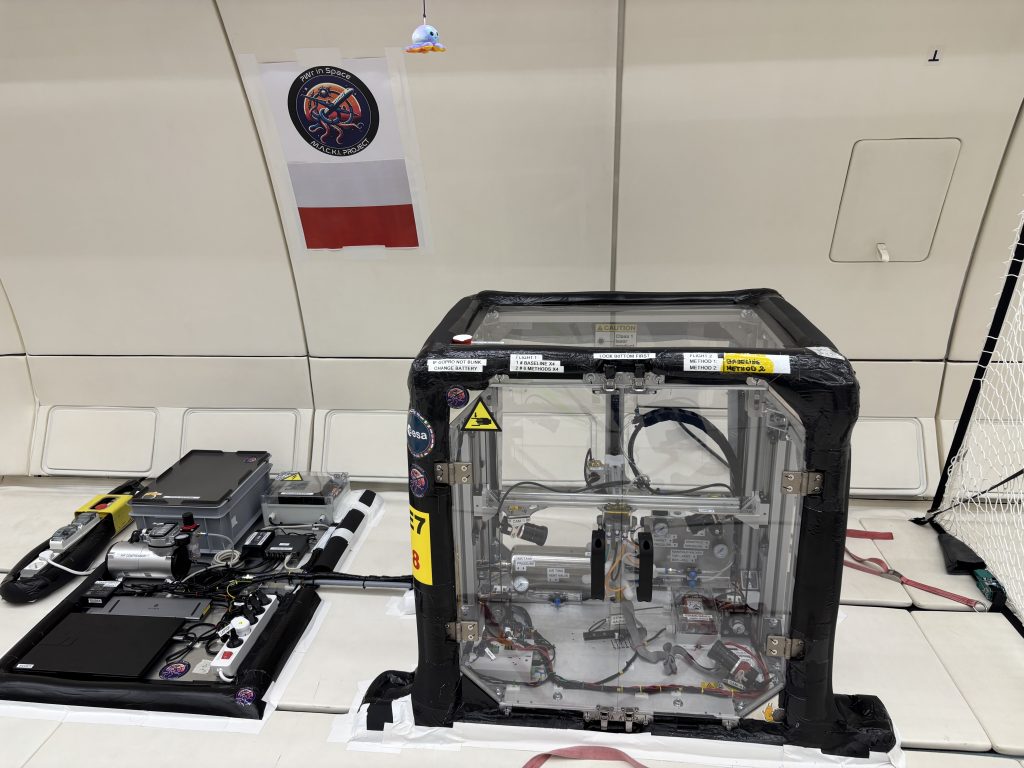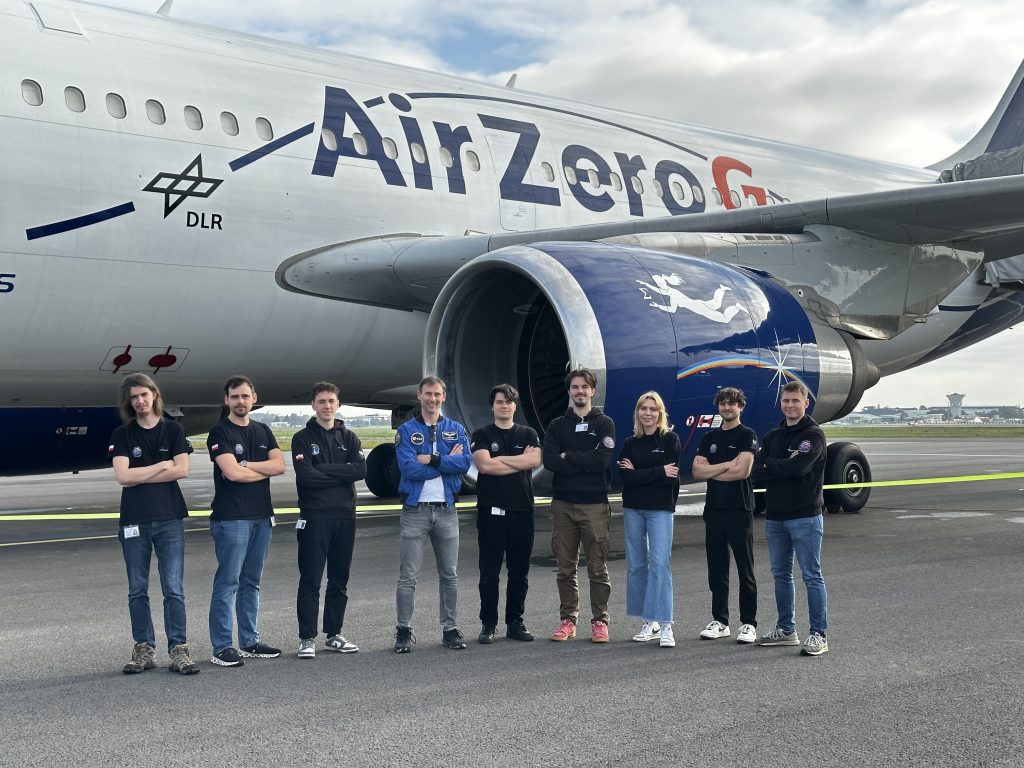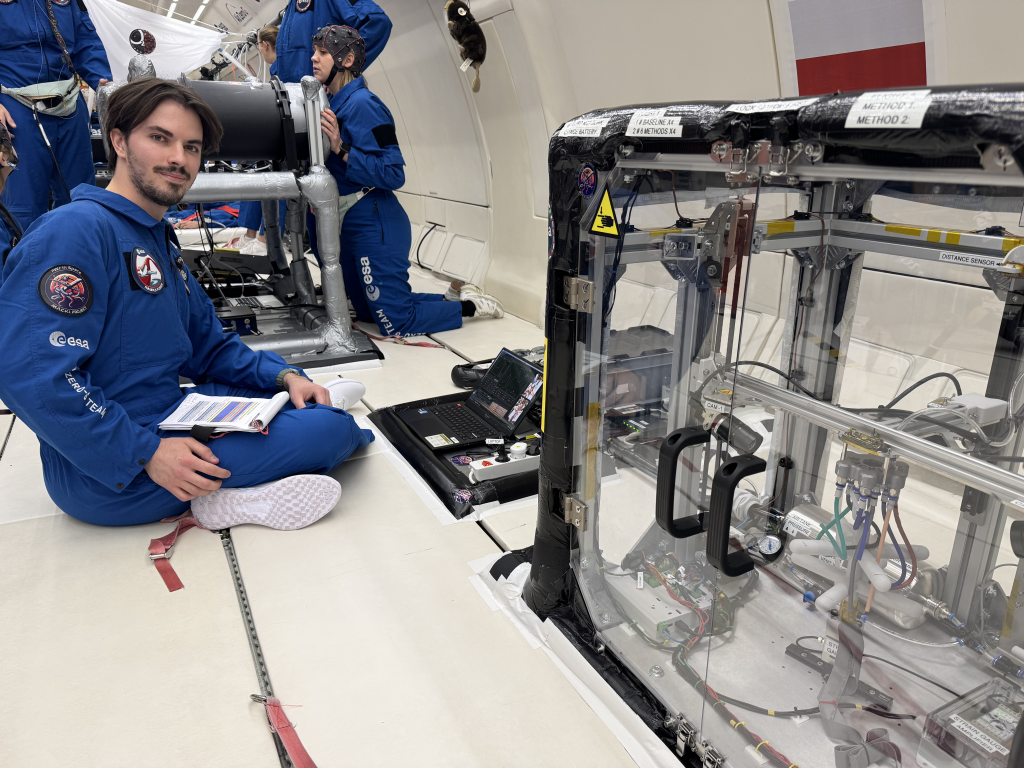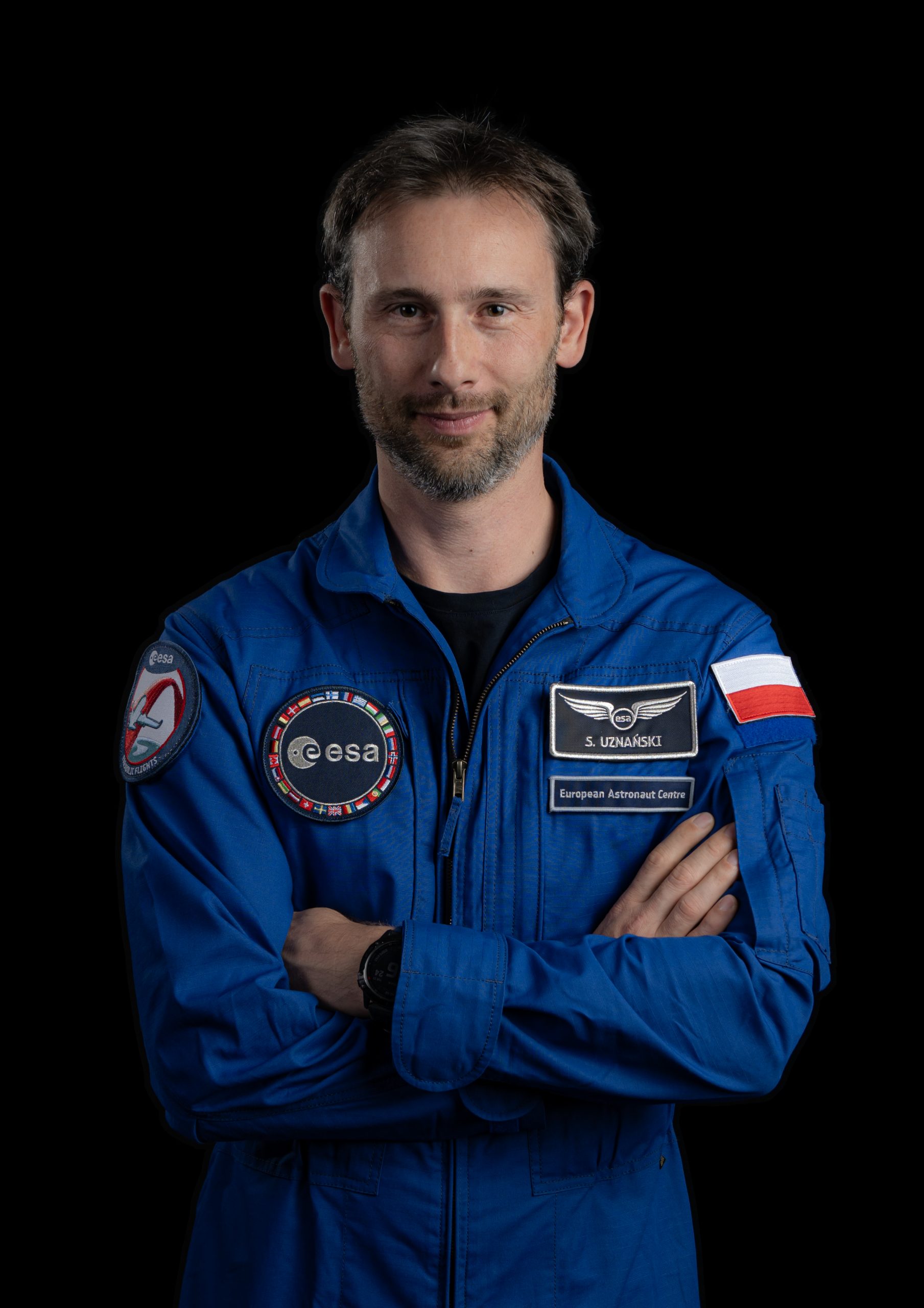Besides testing various pieces of space equipment, such as a European glovebox to run experiments on the Space Station, he also had the opportunity to collaborate with a Polish student group on their innovative experiment, M.A.C.K.I., or the Microgravity Actuated Capturing Kinetic Instrument.
Led by engineers from Wrocław University of Science and Technology, this “active entanglement gripper” is a special type of robotic hand designed to grab objects by wrapping flexible filaments around them, inspired by foundational research from Harvard University

The M.A.C.K.I. experiment onboard NoveSpace’s Airbus A310 AirZeroG. Credit: M.A.C.K.I.
The success of this gripper could help us learn how to capture objects in space, a crucial step in tackling the growing issue of space debris pieces of old satellites and other discarded material that orbit Earth.
Sławosz tested the M.A.C.K.I. during a parabolic flight with the scientists. These flights create short periods of weightlessness, simulating the gravity conditions experienced in space for around 22 seconds at a time.

ESA project astronaut Sławosz Uznański and the M.A.C.K.I. project team in front of NoveSpace’s Airbus A310 AirZeroG plane. Credit: ESA/M.A.C.K.I.
To measure the gripper’s effectiveness, the team compared grip success rates in microgravity during the flight with grips performed on Earth. The students gathered data using special sensors and cameras to assess how well the gripper holds onto different objects after using different grasping methods. A unique test object mimicking a small plant, equipped with pressure sensors, played a key role in their experiments.

Operating the active entanglement gripper during parabolic flight. Credit: M.A.C.K.I.
This research is vital, as the increasing number of satellites and missions launched into space raises the risk of debris, which can pose threats to future operations. The active entanglement gripper could offer a solution to capture and remove this debris, making space safer for all.
The implications of this technology go beyond debris removal. As we look toward long-term space exploration and habitation, systems to maintain space farms will become essential. Robots equipped with advanced grippers like these could assist with delicate tasks in the challenging environment of space agriculture. This technology provides a flexible and adaptable tool for handling objects in space, where traditional robotic hands may struggle due to the low-gravity environment.
“I am grateful to the European Space Agency and Air Zero G for this inspiring parabolic flight campaign. It truly showcases Poland’s swift advancements in space exploration with the M.A.C.K.I. robotic gripper experiment and astronaut training. This experience in weightlessness has been invaluable for testing tools and procedures and enhancing our readiness for future space missions”, says Sławosz.
Polish project astronaut Sławosz Uznański is set to fly to the International Space Station on Axiom Mission 4 (Ax-4) in spring 2025, joining astronauts from India and Hungary through ESA’s partnership with Axiom Space. Assigned as a mission specialist under Axiom Space’s Chief Astronaut Peggy Whitson, Sławosz is currently training for spaceflight, at Axiom, NASA, and SpaceX facilities in the USA.
You can follow the progress of team M.A.C.K.I. on LinkedIn, Instagram, and Facebook.
Follow Sławosz’s journey here, on X, Facebook, LinkedIn, and Instagram.



